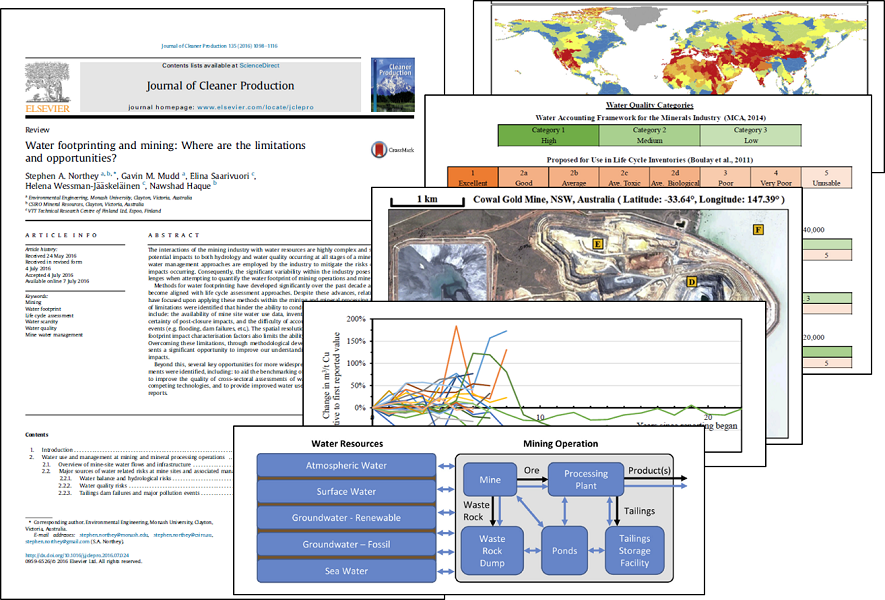Abstract
The interactions of the mining industry with water resources are highly complex and site specific, with potential impacts to both hydrology and water quality occurring at all stages of a mine’s life. A range of water management approaches are employed by the industry to mitigate the risks of adverse water impacts occurring. Consequently, the significant variability within the industry poses a range of challenges when attempting to quantify the water footprint of mining operations and mineral commodities.
Methods for water footprinting have developed significantly over the past decade and have recently become aligned with life cycle assessment approaches. Despite these advances, relatively few studies have focused upon applying these methods within the mining and mineral processing industry. A range of limitations were identified that hinder the ability to conduct these types of studies. These limitations include: the availability of mine site water use data, inventory data for mining supply chains, the uncertainty of post-closure impacts, and the difficulty of accounting for cumulative impacts and extreme events (e.g. flooding, dam failures, etc.). The spatial resolution and data underpinnings of current water footprint impact characterisation factors also limits the ability to interpret results that may be generated. Overcoming these limitations, through methodological development and data collection efforts, represents a significant opportunity to improve our understanding of the mining industry’s water use and impacts.
Beyond this, several key opportunities for more widespread use of mine site water footprint assessments were identified, including: to aid the benchmarking of water performance in the mining industry, to improve the quality of cross-sectoral assessments of water use, to assess the indirect impacts of competing technologies, and to provide improved water use disclosures within corporate sustainability reports.
